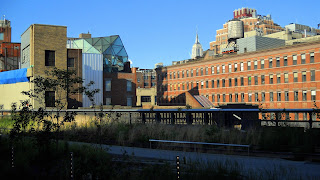

Creating memories is what I think makes for a full life. Of course there are lots of other important elements but I believe doing something memorable every day is good. Obviously I can't say that I can do it every day, but I try. It doesn't have to be big. Actually, I don't believe passing time looking forward to big events. Yes, they can be transformative with big impressions left over, but it is the smaller things that make a bigger difference in life.






Taking pictures is a hobby I enjoy. A picture is like a mini story. Framing, emphasizing (or excluding), and even tweaking the appearance of the "natural" picture is what photography means to me. I took up photography when I was a teenager. I was given a good all-manual camera, no batteries except in the attachable flash. I learned how to estimate the required speed, aperture, ISO, and whatever else. And, it wasn't easy because it was slow. In the days of a 24 or 36 frame film, it took me several days if not weeks to go through it--unless it was a special event that I could go through a 24 frame at once.

Now, I don't remember using the one-hour processing, if that was available back in the days. Even if it was, there was no money for that. So, I had to wait several days to see the results of my shooting. I may have kept some notes about some pictures I had taken but it wasn't very practical to walk around with a notepad writing down what settings I had for what picture.

Anyway, while in college--for a good stretch of it--I had no money for such a hobby. I had a budge of $20 per week for food. That included all food at school & trips to the supermarket. Spending $5-7 on film, processing and prints was not an option. I gave it up. It was also during that time that my car was broken into and my manual camera was stolen.
After I graduated I took some pictures here and there with a small cheap camera. It wasn't until 2004 when I got my first digital camera that my love for photography returned. I still use that bulky Olympus, not-intuitive and (by now) old technology camera. Most of the pictures I have today are from this one. Any DSLR new(er) camera is big now and they all have great features--and much better designs that those available a few years ago.

However, a great camera is one that is being used. If it stays in the closet it's not all that good. My point is that sometimes the size/weight of a camera may prevent its owner from using it or carrying it around. That's why I got myself a Nikon Coolpix recently. It seems that I always have this one handy, in my car or attached to my belt. I've taken some great pictures with it. The most important thing is that I was able to take a picture because I had a camera with me! It sounds stupid but it isn't. I have pictures, a record of things I experienced, that otherwise I know I would not have had. On many occasions it wasn't practical to carry my big camera, so the little one came in ..handy! And, let me tell you, the small ones today pack oodles of features and capabilities.

As I'm writing this, the night is well worn. One way to relax before bed is to do a crossword puzzle or work on the pictures I've taken. I had used Photoshop once; too big; the Elements, a smaller version, may be more appropriate for many photographers. However, for most amature photographers, Picasa is a great photo program to have. It's part of Google and it's free. Try it. I have a Gmail account, but I don't know if you need one to be able to upload your pictures on the internet. Yes, you'll need to do that if you take many pictures. I've been doing this for a long time now. You can use Flickr or a number of other free programs/sites. For example, here's a link to one of my online albums: Hudson Valley You could also link only to single picture: Pier on Hudson.

If you take pictures at an event or for any occasion that you want to share them with many other people the only sensible thing is to upload them to the web. I do it through Picasa, then I sent the link to a number of people instead of emailing them a bunch of pictures. That way they can choose for themselves what to do, including downloading any picture they like. You can have those online galleries private so only those who have the key to them can see your pictures.

I think photography is a great activity. I'd recommend it. It's rather inexpensive. Same thing with writing. Thinking about expressing a thought, an idea, an image, etc, are all great for the mind. Happy trails fellow traveller!
PS> All the pictures here don't have a common theme other than I took them in New York state this month (July 2009). They are among many, not superb or artsy but I like them and that's all there's to them. By clicking on them you can make them bigger. I found out that IE does keep this available, but Firefox removes this option when I move the pictures around within the post. That's why on some previous posts clicking on the picts doesn't do anything.
UPDATE: As per request, and in order from top to bottom:
1. Amusement park; 2. Hudson river by Rhinebeck; 3. Coney Island; 4. Hyde Park; 5. Coney; 6. Lower West Side; 7. LWS; 8. Harriman; 9. Woodstock; 10-12. Central Park; 13-15 Esopus/Kingston; 16. Peekskill; 17. Kingston lighthouse; 18. South St. Seaport; 19. Coffeehouse; 20. Coney.



